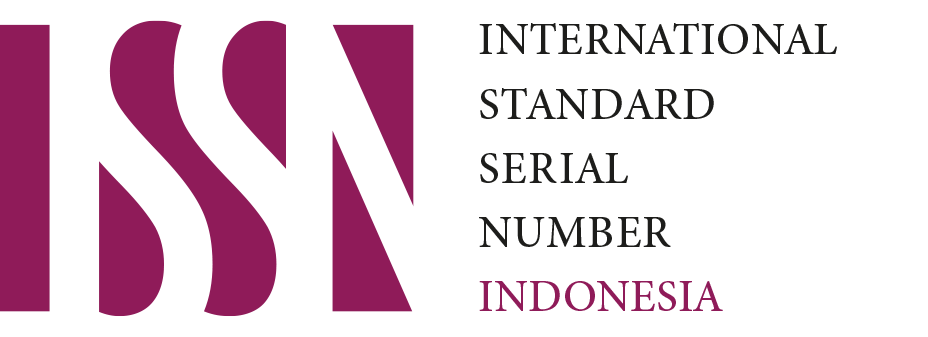Uric Acid Levels in Type 2 Diabetes Mellitus Patients
Abstract
Patients with type 2 diabetes mellitus are about 90% of all cases of DM in the world. Type 2 diabetes is caused by the body's inability to respond properly to insulin or is called insulin resistance. Insulin resistance causes hyperglycemia and hyperinsulinemia which results in decreased function of uric acid excretion in the kidney tubules, and causes an increase in uric acid in the blood or hyperuricemia. This type of research is descriptive, with a cross sectional approach in May for 5 days from May 17 to May 21 2019. The research sample is type 2 DM outpatients, at Dr. Hospital. Adhyatma MPH consisted of 24 people who were taken based on total sampling who agreed to the informed consent, were over 20 years old, had no history of gout, and fasted for 10-12 hours. The purpose of this study was to determine the uric acid levels of type 2 DM outpatients based on gender, age, and blood pressure at Dr. Hospital. Adhyatma MPH. The results showed that normal uric acid levels in type 2 DM outpatients were 14 people (58.3%) and hyperuricemia 10 people (41.6%). 7 patients (29%) each had normal urate levels. The highest normal uric acid levels were in patients aged over 55 years as many as 9 people (37.5%) and 10 people with hypertension (41.7%). The most hyperuricemia occurred in 6 female patients (25%), 6 patients over 55 years old (25%) and 6 patients with hypertension (25%).
Keywords
Full Text:
PDFReferences
Ardillah, Y. (2016). Faktor Risiko Kandungan Timbal di Dalam Darah. Jurnal Ilmu Kesehatan Masyarakat, 7(3).
Alatas, H. (2021). Penatalaksanaan Hiperurisemia Pada Penyakit Ginjal Kronik (CKD), Herb-Medicine J, Vol. 4, (1), pp. 1, 2021.
Ashary, K. L. (2019). Kadar Glukosa Darah dan Tekanan Darah pada Anggota PROLANIS di Puskesmas Somagede Kabupaten Banyumas. Jaringan Laboratorium Medis, 1(2), 91–97.
Ellyza N, Sofitri. (2012). Hiperurisemia pada Pra Diabetes. Jurnal Kesehatan Andalas, 1(2), 86-91.
Fatimah, R. N. (2015). Diabetes Mellitus Tipe 2. J. Majority, 4 (5), 93-101.
Hestiana, D. W. (2017). Faktor-Faktor Yang Berhubungan Dengan Kepatuhan Dalam Pengelolaan Diet Pada Pasien Rawat Jalan Diabetes Mellitus Tipe 2 di Kota Semarang. Journal of Health Education, 25 (1), 57–60, 1994.
Imawati, H. (2020). Gambaran Kadar Glukosa , Tekanan Darah , dan Profil Lipid pada Pasien Prolanis DM Hipertensi. Jaringan Laboratorium Medis, 02(02), 61–67.
J. Farizal, P. W. Welkriana, and R. Patroni. (2019). Hubungan Kadar Asam Urat Dengan Tekanan Darah Pada Lanjut Usia (Lansia) Di Balai Pelayanan Dan Penyantunan Lanjut Usia (BPPLU) Pagardewa Kota Bengkulu. J. Nurs. Public Health, 7 (2), 8–12.
Khoirin, W. A., & Hartono, R. (2021). Kadar Hemoglobin pada Pasien Diabetes Mellitus Tipe 2 Hemoglobin Levels in Type 2 Diabetes Mellitus Patients. Jurnal Laboratorium Medis, 03(01), 23–28.
Lathifah. (2017). Hubungan Durasi Penyakit Dan Kadar Gula Darah Dengan Keluhan Subyektif Penderita Diabetes Melitus. Jurnal Berkala Epidemiologi, 5 (2),231-239.https://doi.org/10.20473/jbe. v5i2.2017.231-239.
Lin SD, Tsai DH, Hsu SR. (2006). Association Between Serum Uric Acid Level and Components of The Metabolic Syndrome. J Chin Med Assoc. 69 (11), 512-516.
Mulyasari, A. Dieny, F.F. (2015). Faktor Asupan Zat Gizi yang Berhubungan Kadar Asam Urat Darah Wanita Postmenopause. Junral Undip, 4 (2), 232-242. from http://ejournal-s1.undip.ac.id/index.php/jnc.
Pertiwi, N.M.L, Wande, N, Mulyantari, N.K. (2019). Prevalensi Hiperurisemia Pada Penderita Diabetes Melitus Tipe 2 di Rumah Sakit Umum Pusat Sanglah Denpasar Bali Periode Juli-Desember 2017, Jurnal Medika Udayana, 8 (10) https://ojs.unud.ac.id/index.php/eum/article/download/54099/32059.
Purlinda and W. Widodo. (2020). “Relationship Between Blood Pressure and Urine Proteins in Type 2 Diabetes Melitus Patients in Kedungmundu Health Center,” Journal. Riset. Kesehatan, 9 (2), 102–106.
Rivandi, J. et al. (2015). Hubungan Diabetes Mellitus Dengan Kejadian Gagal Ginjal Kronik Relationship Between Diabetic Nephropathy and Incident with Chronic Kidney Disease. J Majority 4(9), 27-34.
Sachdev B. (2012). Prevalence of Hyperuricemia and Its Relation with Metabolic Syndrome in a Select Nomand Tribal Population of Rajasthan, India. International Journal of Health Sciences and Research, 2 (4), 25-32.
Saputri, S. W. et al. (2016). Study of Treatment of Type 2 Diabetes Mellitus with Hypertension in Outpatient Departement of dr. H. Koesnadi General Hospital Bondowoso in the Period of 2014. Pustaka Kesehatan, 4(3), 479-483.
Sari, L. P. (2020). Kadar Ureum Sebelum dan Sesudah Hemodialisa pada Pasien Gagal Ginjal. Jaringan Laboratorium Medis, 02(02), 104–108.
Savitri, D. (2017). Diam-Diam Mematikan, Cegah Asam Urat Dan Hipertensi, Healthy. Yogyakarta: Healthy. doi: 10.1590/S1516 18462008000300012.
Sofia, R. and Gusti, Y. (2017). Hubungan Depresi dengan Status Gizi Lansia di Panti Sosial Tresna Werdha Belai Kasih Bireuen. Jurnal Ilmiah Sains, Teknologi, Ekonomi, Sosial dan Budaya, 1(1), 54–60.
DOI: https://doi.org/10.31983/jlm.v3i2.8026
Article Metrics
Refbacks
- There are currently no refbacks.
Copyright (c) 2021 Jaringan Laboratorium Medis

This work is licensed under a Creative Commons Attribution-ShareAlike 4.0 International License.
--
OFFICE INFORMATION :
Jurusan Analis Kesehatan - Kemenkes Poltekkes Semarang, https://analis.poltekkes-smg.ac.id Jl. Wolter Monginsidi No. 115 Pedurungan Tengah, Semarang, Jawa Tengah, Indonesia ; Email: jlm@poltekkes-smg.ac.id
 Jaringan Laboratorium Medis disseminated below Creative Commons Attribution-ShareAlike 4.0 International License.
Jaringan Laboratorium Medis disseminated below Creative Commons Attribution-ShareAlike 4.0 International License.
Our Related Accounts :
 |  |  | |||||
| MoU PATELKI | ISSN BRIN | Google Scholar | Garuda | Stat Counter | DOI Crossref |
| Jaringan Laboratorium Medis © 2019 |









